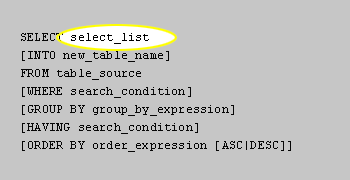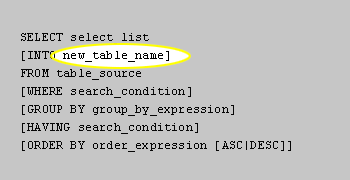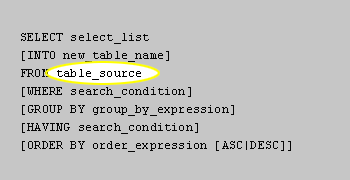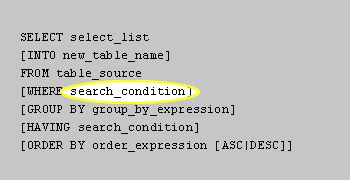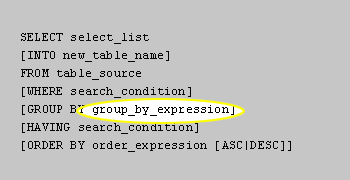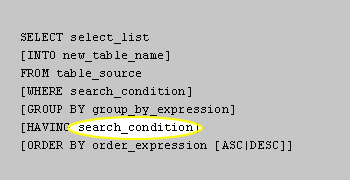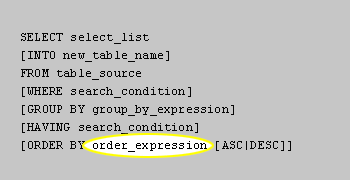Overview of selecting data
SELECT Statement syntax
Getting Started with a Basic Select Statement
If you have not used SQL before, the following section will discuss DML in more detail.
The SELECT statement and the structures used within it contain most of the commands you will perform with SQL Server. Let us take a look at the basic syntax rules for a SELECT statement:
The SELECT statement and the structures used within it contain most of the commands you will perform with SQL Server. Let us take a look at the basic syntax rules for a SELECT statement:
SELECT [ALL|DISTINCT] [TOP (<expression>) [PERCENT] [WITH TIES]]
<column list>
[FROM <source table(s)/view(s)>]
[WHERE <restrictive condition>]
[GROUP BY <column name or expression using a column in the SELECT list>]
[HAVING <restrictive condition based on the GROUP BY results>]
[ORDER BY <column list>]
[[FOR XML {RAW|AUTO|EXPLICIT|PATH [(<element>)]}[, XMLDATA]
[, ELEMENTS][, BINARY base 64]]
[OPTION (<query hint>, [, ...n])]
Let us look at the individual elements. Note that the parentheses around the TOP expression are, technically speaking, optional. Microsoft refers to them as required, and then points out that a lack of parentheses is actually supported, but for backward compatibility only. This means that Microsoft may pull support for that in a later release, so if you do not need to support older versions of SQL Server, I strongly recommend using parentheses to delimit a TOP expression in your queries.
SELECT Statement and FROM Clause
The verb, in this case a SELECT, is the part of the overall statement that tells SQL Server what you are doing.
A SELECT indicates that you are merely reading information, as opposed to modifying it. What you are selecting is identified by an expression or column list immediately following the SELECT. Next, you add in more specifics, such as where SQL Server can find this data. The FROM statement specifies the name of the table or tables from which you want to get your data. With these, you have enough to create a basic SELECT statement. Start the SQL Server Management Studio and take a look at a simple SELECT statement:
SELECT * FROM INFORMATION_SCHEMA.TABLES;
